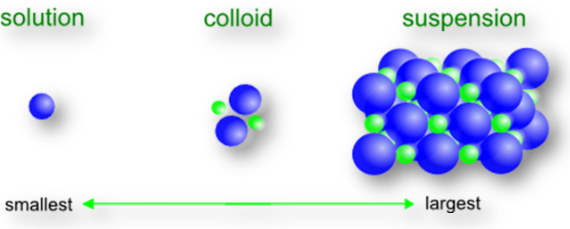Definition, properties, and classification of colloids are given below.
Definition of Colloids
Graham was the first man who introduced the term colloids in 1849. A Colloid may be defined as a substance in a particularly fine state of subdivision, dispersed in another continuous medium giving rise to a large increase in surface area of the dispersed phase. Thus Colloids are two phases heterogeneous system. The dispersed phase and the dispersed medium. e.g., Clay, milk, gum, blood, etc.
Classification of Colloids
Colloids may be classified in different ways as follows.
1. According to the affinity of dispersed phase towards dispersed medium, Colloids may be-
- Lyophobic/ Hydrophobic colloids. e.g., metal, gold, sulfide salt, etc.
- Lyophilic. e.g., clay minerals, gelatin, gum, etc.
2. According to particle shape, colloids may be;
- Sphero colloids. e.g., Glycogen.
- Linear colloids. Rubber, PVC.
3. According to chemical composition, colloids maybe
- Inorganic or mineral colloids. e.g., clay mineral, Fe(OH)2, etc.
- Organic colloids. e.g. humus, protein etc.
4. According to structure, colloids are 2 types;
- Molecular colloids (macro). e.g., starch, cellulose, etc.
- Micellar colloids (micro). e.g., Soap, emulsion, etc.
Properties of Colloids
Properties of colloids are listed below.
- Particle size.
- Surface area.
- Surface charge.
- Adsorption of cations and anions.
- Adsorption of water.
- Heterogeneity.
- Osmotic pressure.
- Filterability.
- Faraday Tyndall effect.
- Colour.
- Brownian movement.
- Catephoresis/ electrocatephoresis.
- Electro osmosis.
- Isoelectric point.
- Coagulation.
- Adsorption.
- Zeta potential/ electrostatic potential.
- Thermodynamic potential.
